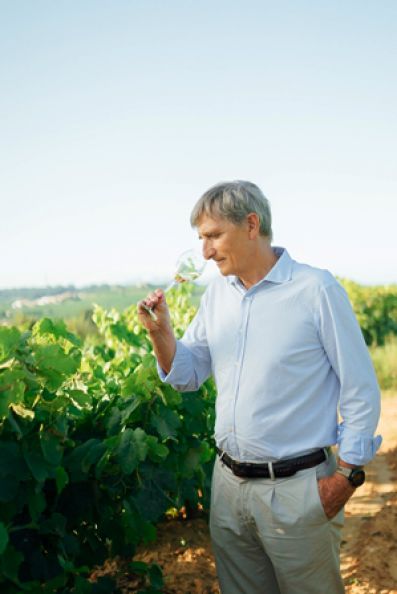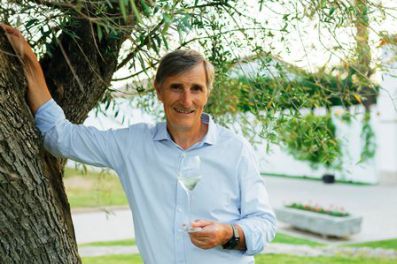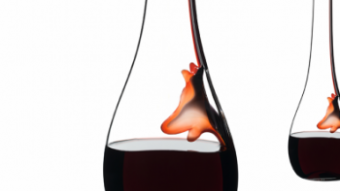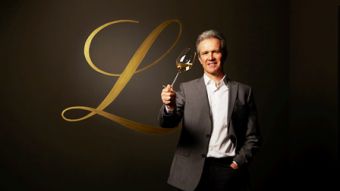‘The wine sector must become even more competitive and innovative’.
Interview with Javier Pagés, president of Barcelona Wine Week.
Barcelona Wine Week (BWW), the benchmark show for quality Spanish wine, will hold the largest edition in its history in 2025. The show will bring together around 1,100 exhibiting companies and will be held for the first time in two pavilions at Fira de Barcelona. Its focus will continue to be on generating business opportunities for exhibiting firms, as well as analysing challenges and trends in the sector. We spoke to the president of Barcelona Wine Week and the D.O. Cava, Javier Pagés.
 According to all the data, we are drinking less and less wine, but better and better. How would you define the current situation of Spanish wine?
According to all the data, we are drinking less and less wine, but better and better. How would you define the current situation of Spanish wine?
Spanish wine is of great quality and has many competitive advantages. Among them, the great diversity and uniqueness of territories, cultures, history and native varieties, the fact that we have the largest area of organic vineyards in the world, and the good fortune of being a world reference in gastronomy and tourism. But it is true that wine consumption worldwide is not growing and consumer habits are evolving, forcing the sector to be even more competitive and innovative. These are times that do not allow for complacency. Therefore, we must move forward in diversifying by expanding markets, in sustainability and innovation. And, at the same time, in the application of new technologies, in wine tourism, in communication and in consolidating an attractive image.
What about the current situation of cava?
Cava is a very international product, 70% of its sales are produced in more than 150 countries and it is highly appreciated by consumers who are looking for quality sparkling wines. But neither is it unaffected by the transformation of wine consumption in the world, and it should not stand still. It is very important for the sector to be united in order to work together to promote the value of a unique and attractive product of magnificent quality and enormous potential.
The sector has experienced its third consecutive harvest severely affected by drought, especially in areas such as Catalonia and Levante. How should it adapt to the foreseeable lack of rain in the future?
In areas with low rainfall or areas prone to drought, it is necessary to have water support. It is clear that public initiatives will be necessary to ensure sustainability. At the same time, the sector must also act by choosing varieties that require less water, adapting planting density and the conduction system and opting for adequate fertilisation systems.
Finally, the expectation of lower yields in the vineyards reinforces the vision of a Denomination of Origin of qualitative and valuable products that allows the sustainability of the whole chain and its territory.
Beyond sustainability, what are the major challenges facing the sector?
Firstly, to continue to grow in internationalisation and diversify markets. At the same time, to commit to innovation in all areas of business and invest in the application of new technologies, both in viticulture and in winery production, to optimise resources and generate greater efficiency. It is also essential to invest in marketing strategies to further strengthen our distribution channels and our innovations. And it is key for the sector to gain notoriety and continue to grow in the perception of the value of our products.
 BWW 2025 will be held in two halls for the first time to accommodate the large number of wineries interested in participating. How do you explain the success of the show?
BWW 2025 will be held in two halls for the first time to accommodate the large number of wineries interested in participating. How do you explain the success of the show?
BWW has been able to bring together the wineries, buyers and operators of the sector by creating an exclusive event held at the beginning of the year in a city as fascinating as Barcelona. The sector needed a show of reference, national and international, for business, to share knowledge, to leave a mark, an image and an imprint, to learn, to present innovations, to network, to be up to date. And BWW is the ideal showcase for all of us to proudly launch a very powerful image of quality and diversity of Spanish wines to the world for the benefit of the entire sector.
One of its keys is, therefore, the attraction of large wine importers and distributors from all over the world. What does BWW offer to these large buyers?
BWW has been able to select and attract major importers, distributors and buyers from all over the world, creating a show that is intense in terms of transactions, business and networking, and profitable for all participants. At the same time, it brings together a list of top-level wineries from all the Spanish designations of origin, allowing visitors to tour the entire Spanish territory while enjoying the landscape and the culture of wine.
It also offers a programme of tastings and talks on the most crucial issues for the sector, with leading figures from the national and international wine world. And, all of this, on dates that allow you to improve your annual planning.
In this edition, the wines from old vines will have a special role. What is it about these wines that have become true jewels?
Old vines that have survived the passing of the years in good condition bring together history, culture, indigenous varieties, in some cases unique, many vintages behind them, etc. And they demonstrate a capacity to adapt to the soil and climate that has allowed them to develop a wide and deep root system, extracting great typicity from their soil, giving grapes with a greater concentration of flavours, complexity and the potential to improve in long ageing. They are truly jewels.
The show will also analyse another trend: the boom in white wines. Why are they gaining ground over reds?
Consumers are changing their habits and following trends, some stay with them and others are more volatile and changeable. Currently, the search for well-being is leading consumers to higher quality wines and a change in their preferences, especially among the younger generations, evolving towards lighter, fresher wines, which allow for more informal drinking experiences. White wines and sparkling wines are benefiting from these trends, while red wines, traditionally recognised for their more complex flavours, have suffered. We are sure to see reds adapting to these new habits in the near future.





